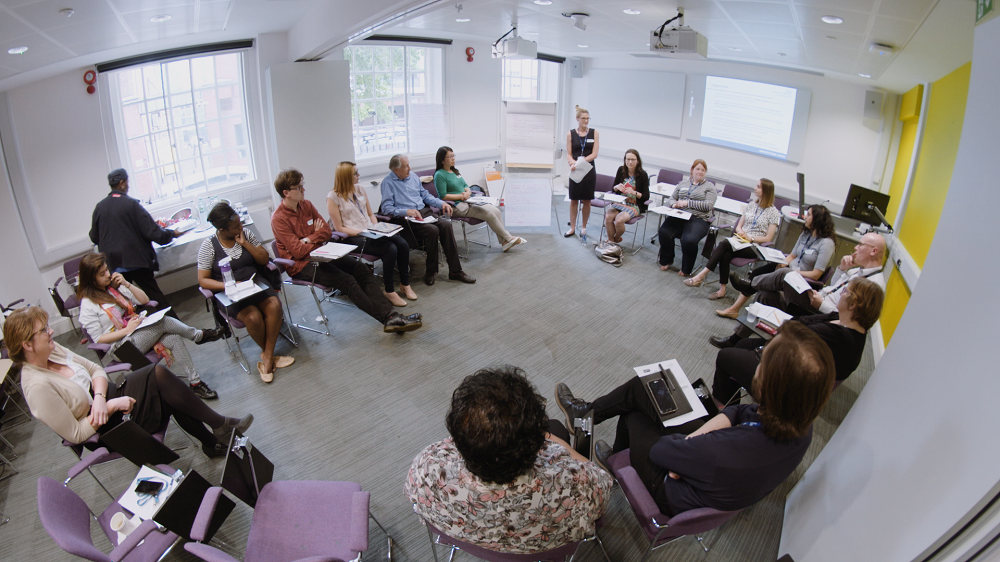By Tamanna Miah
I attended the Communications Strategy event on 30 May 2017, which brought together a combination of patients, carers, members of the public, healthcare professionals, researchers and PSTRC staff members who work in communications. We discussed a wide range of issues and had the opportunity to feed into a draft communications strategy for the NIHR Patient Safety Translational Research Centre.
It was a busy morning with introductions and a presentation from Dr Stephanie Archer on the PSTRC and its new research themes, which are yet to be formally announced. Sandra Jayacodi, a patient representative, also spoke on what co-production and patient safety means to her. It was interesting to hear that Sandra did not fully understand the term “patient safety” when she first became involved with the PSTRC. The team noted that some thought needed to go into how “patient safety” can be communicated most effectively to the public, as it is such a broad topic. Afterwards, there were group discussions facilitated by members of staff on specific questions such as “How do you like to receive information?” and “What ideas do you have for good and novel ways to communicate to different audiences?” Everyone had the chance to present their point of view; it was interesting to listen to the various ideas that the participants had. The staff were positive and enthusiastic.
Everyone present at the event felt that communication is important when reaching out to diverse audiences, so that research can reach as many people as possible and new people might be encouraged to be involved in research. Having an engaging communication strategy when distributing research findings to the wider public, researchers, industry and policy makers, can really impact what is understood or taken forward. One attendee mentioned that short videos and memes are becoming much more popular as they can go viral very quickly. It is important to ensure that the PSTRC uses real-life case studies and personal stories to help people understand what patient safety is, what the centre does and how patients and the public can get involved with the centre and improve research.
Before this event, I had never heard of PSTRC or knew what they did. By attending the event, I learned a lot more about the PSTRC and what they do and had the opportunity to have informative discussions with staff, professionals and members of the public.
When communicating to a variety of audiences it is important to ensure that there is a variety of methods available. For example, a consistent and engaging presence on a number of social media platforms, such as Facebook, Twitter, Instagram, Youtube, Snapchat, and LinkedIn, can make the PSTRC more visible to online audiences. Using a variety of creative mediums, such as more photographs, blogs, concise articles, fact sheets, videos, memes, animations, and short clips etc. can keep the audiences more engaged. I would also encourage the PSTRC to go to the public, for example, conferences, educational fairs, assemblies, community groups, pubs and youth groups so that they are reaching out to different types of people in various ways. The PSTRC could hold events like open days and seminars. This could be during lunchtime or in the evenings or over the weekend, so that it allows people to attend who might have a day job.
The PSTRC should make the effort to reach out to those who may not have heard of the PSTRC or have access to it such as students, young people, black and minority ethnic (BME) groups, disabled, young parents, carers, refugees, migrants and those whose first language is not English. I would really like the PSTRC to involve these groups as they would very much benefit from the activities. The highlighted groups of people have a wealth of knowledge and expertise which can be often overlooked, especially as these opportunities can be rare for them. I would recommend the PSTRC do more on co-production and collaborate with other charities and organisations doing similar work and share best practices in order to save time, money and resources. Team work makes dreams work!
It would be great if the PSTRC can launch advisory groups and an ambassador network to help reach out to more people, as in my experience word of mouth and peer-to-peer networks really work, especially with the younger generation. This outreach would allow more patients and members of the public to be involved at the heart of the PSTRC, so they can have more of an ownership and feel that they are fully welcome and a part of it. My main recommendation would be for the PSTRC to publicise themselves more as patient safety is a subject that is unknown in the public. I think that if the public knew more about patient safety, it could help them react differently in a healthcare situation and even have better health!
I am looking forward to seeing some of my ideas and suggestions from the group discussions being implemented into practice in the PSTRC’s communications strategy, and would like to stay involved in the PSTRC’s communications and activities.
